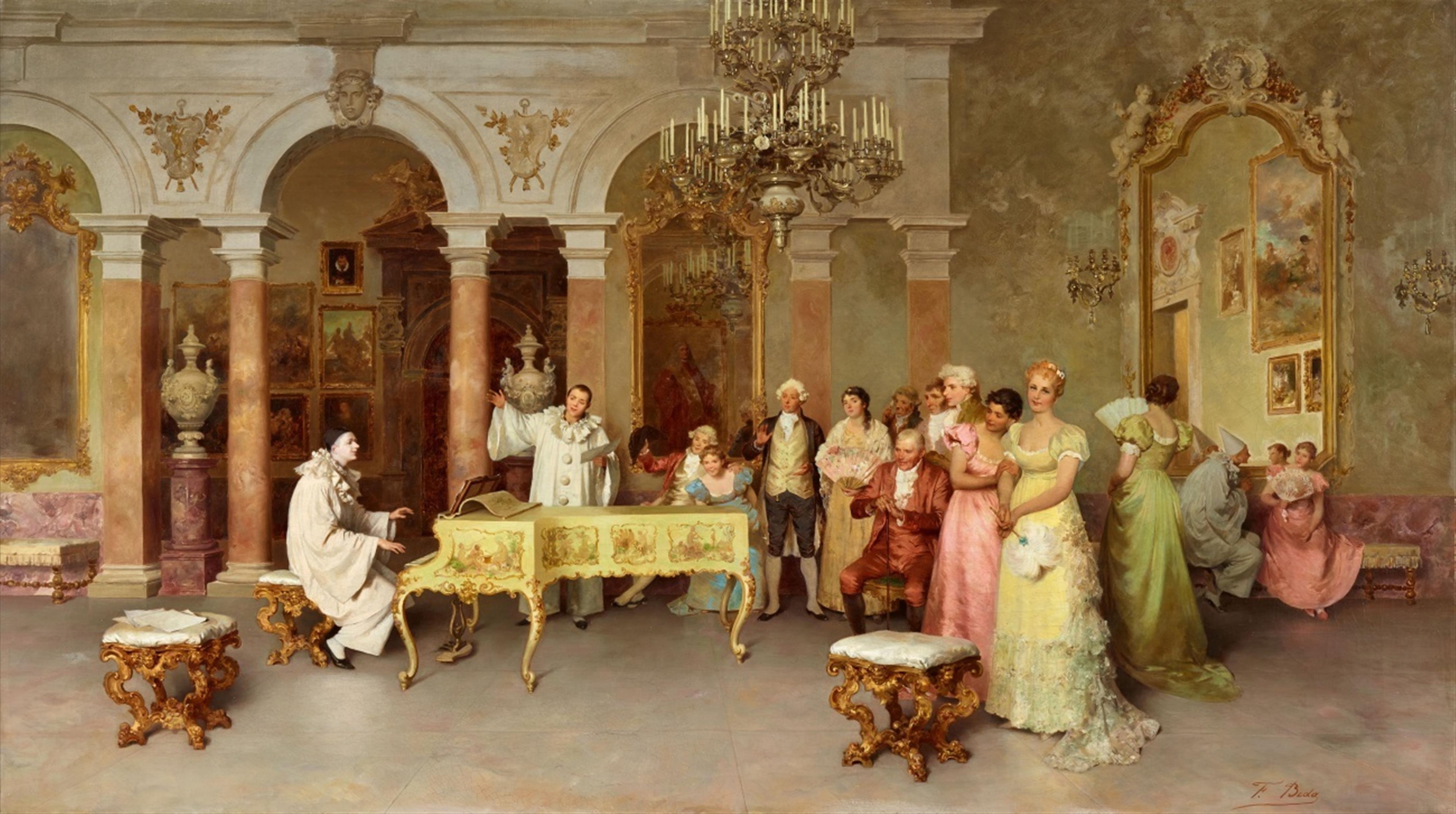Francesco Beda
The Favorite's Arrival
Oil on canvas (relined). 82 x 143 cm.
Signed lower right: F. Beda.
The late 19th century was to experience a burgeoning interest in the social and artistic history of the previous century. The early publications of Edmond and Jules de Goncourt on French artists of the 18th century awakened a general curiosity and fascination for the refined tastes and decadent lifestyles of the old aristocracy. Paintings and engravings by the great masters of this era, Antoine Watteau, François Boucher, Jean-Baptiste Simeon Chardin, and Jean-Honoré Fragonard provided a window into the visual language of this bygone era.
Ernest Meissonier (1815-1891) was one of the first artists to translate this pictorial legacy into the contemporary idiom. His interest in domestic scenes, which was also inspired by the 17th century Dutch school, helped him to develop a new fashion in painting which was to spread rapidly throughout the continent, especially among the middle classes. The taste for domestic scenes and motifs from everyday life à la Meissonier held a significant market share for many years. Whilst Meissonier mainly concerned himself with the activities and interests of the 18th century scholarly elite, depicting art connoisseurs examining their acquisitions and philosophers engrossed in their works, his followers would soon create a demand for more entertaining and light-hearted motifs. Their works usually focused on small gatherings of young and beautiful protagonists, and paid particular attention to the details of their costumes and interior décor. Francesco Beda is regarded as one of the most talented of Meissonier's followers working in this style.
Beda was born in Triest in 1840 and visited the Accademia di Belle Arti Venezia, where he was taught to paint by Karl von Blaas (1815-1894). Through regular visits to the neighbouring countries of Croatia and Hungary, he was able to secure a number of portrait commissions. He later spent some time in England, where his genre scenes and narrative paintings earned him regular patronage from art lovers and collectors. His son Giulio Beda (1879-1954) went on to enjoy a successful career as a landscape painter in Germany.
Provenance
Exhibited in Berlin in 1874 (labelled to the reverse). - Paris World Fair 1878 (labelled to the reverse) - West German private ownership.

